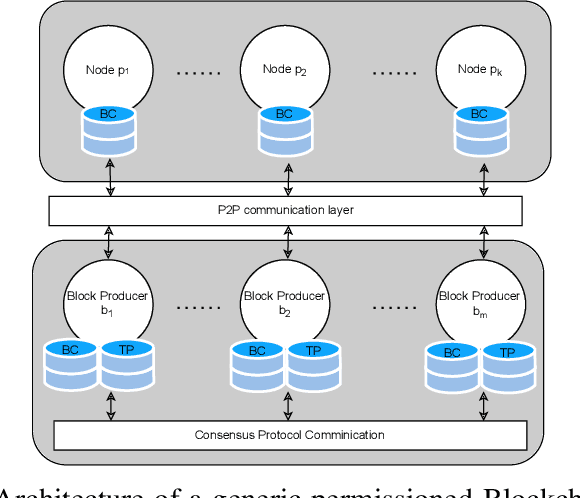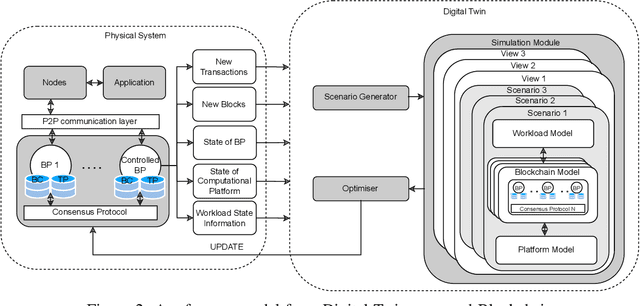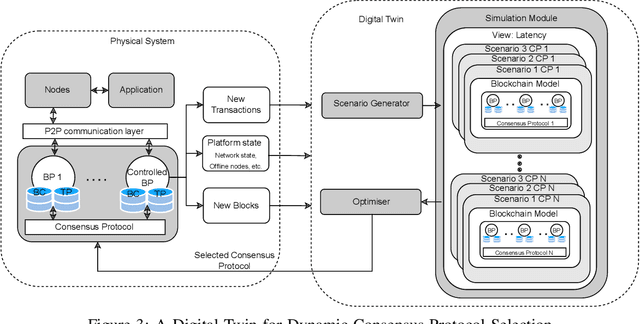Georgios Diamantopoulos
Large Language Models for Explainable Decisions in Dynamic Digital Twins
May 23, 2024


Abstract:Dynamic data-driven Digital Twins (DDTs) can enable informed decision-making and provide an optimisation platform for the underlying system. By leveraging principles of Dynamic Data-Driven Applications Systems (DDDAS), DDTs can formulate computational modalities for feedback loops, model updates and decision-making, including autonomous ones. However, understanding autonomous decision-making often requires technical and domain-specific knowledge. This paper explores using large language models (LLMs) to provide an explainability platform for DDTs, generating natural language explanations of the system's decision-making by leveraging domain-specific knowledge bases. A case study from smart agriculture is presented.
Dynamic Data-Driven Digital Twins for Blockchain Systems
Dec 07, 2023Abstract:In recent years, we have seen an increase in the adoption of blockchain-based systems in non-financial applications, looking to benefit from what the technology has to offer. Although many fields have managed to include blockchain in their core functionalities, the adoption of blockchain, in general, is constrained by the so-called trilemma trade-off between decentralization, scalability, and security. In our previous work, we have shown that using a digital twin for dynamically managing blockchain systems during runtime can be effective in managing the trilemma trade-off. Our Digital Twin leverages DDDAS feedback loop, which is responsible for getting the data from the system to the digital twin, conducting optimisation, and updating the physical system. This paper examines how leveraging DDDAS feedback loop can support the optimisation component of the trilemma benefiting from Reinforcement Learning agents and a simulation component to augment the quality of the learned model while reducing the computational overhead required for decision-making.
Digital Twins for Dynamic Management of Blockchain Systems
Apr 26, 2022



Abstract:Blockchain systems are challenged by the so-called Trilemma tradeoff: decentralization, scalability and security. Infrastructure and node configuration, choice of the Consensus Protocol and complexity of the application transactions are cited amongst the factors that affect the tradeoffs balance. Given that Blockchains are complex, dynamic dynamic systems, a dynamic approach to their management and reconfiguration at runtime is deemed necessary to reflect the changes in the state of the infrastructure and application. This paper introduces the utilisation of Digital Twins for this purpose. The novel contribution of the paper is design of a framework and conceptual architecture of a Digital Twin that can assist in maintaining the Trilemma tradeoffs of time critical systems. The proposed Digital Twin is illustrated via an innovative approach to dynamic selection of Consensus Protocols. Simulations results show that the proposed framework can effectively support the dynamic adaptation and management of the Blockchain
 Add to Chrome
Add to Chrome Add to Firefox
Add to Firefox Add to Edge
Add to Edge